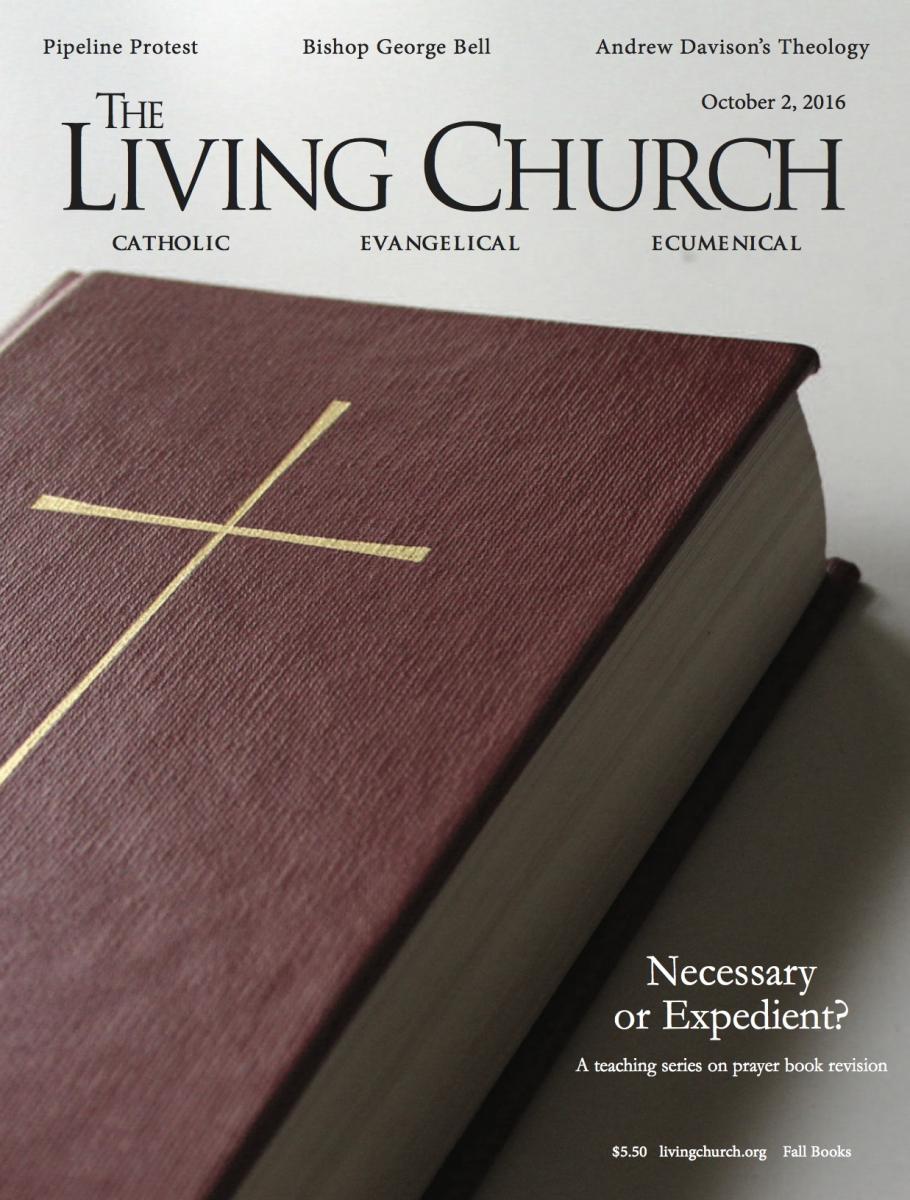 The Oct. 2 edition of The Living Church is available online to registered subscribers. In the cover essay, the Rev. Mark Michael introduces a new series — Necessary or Expedient? — that will examine whether the Episcopal Church is ready for another revision of the Book of Common Prayer, and what such revision would likely involve.
The Oct. 2 edition of The Living Church is available online to registered subscribers. In the cover essay, the Rev. Mark Michael introduces a new series — Necessary or Expedient? — that will examine whether the Episcopal Church is ready for another revision of the Book of Common Prayer, and what such revision would likely involve.
Michael writes, in part:
Perhaps the time has finally come. After little further action in 1994 and the rejection of similar legislation in 2006, General Convention in 2015 passed resolutions calling on the Standing Commission on Liturgy and Music to prepare comprehensive plans for the revision of both the Book of Common Prayer and the Hymnal. Only revision plans were solicited. new books would perhaps lie a decade in the future, if they are to be books at all. And of course the process could be delayed again, as it was in the late 1990s. Perhaps the time is not yet right; perhaps the words of [Neil] Alexander, who has since served as Bishop of Atlanta and is now dean of the University of the South’s School of Theology, remain as wise and timely as they were nearly 20 years ago.
Liturgical revision of some sort has been on the agenda of most General Conventions since the very beginning, mostly in the form of slight rubrical alterations or the provision of supplemental resources. But the episcopal Church has had only four prayer books in the past 226 years, relatively few for an American denomination. This is not an easy process for us, which is why two of the three resolutions for major reform in the last 20 years called for “pastoral sensitivity.” The latter phrase was dropped in last summer’s resolution. Perhaps this was accidental, but one does wonder.
I, for one, would be among the last of Episcopalians to sign up for a “Society for the Preservation of the 1979 Book of Common Prayer.” The book has clearly aged, and I do not just mean the “Star Wars canon,” eucharistic Prayer C. The current prayer book’s liturgies were built on scholarly assumptions that have not worn well, especially Dom Gregory Dix’s four-fold shape of the liturgy, and the assumption that patristic worship was largely uniform. its signature note, a radical baptismal theology, has been embraced in subsequent liturgical revisions by a few sister churches, but decisively rejected by others. it smacks too often of the hectoring schoolmaster, more intent on giving us our marching orders than inviting us into the presence of the living God.
The 1979 prayer book will need to be revised. But not yet.
Are We Done with the ’79 Prayer Book? | By Mark Michael









